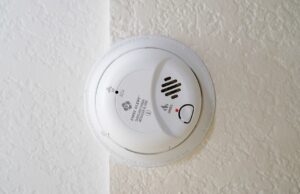Educate your teen driver on the “5 to drive” principles.
 The National Highway Traffic Safety Administration (NHTSA) states that auto accidents are the leading cause of death for teenagers aged 15-19 in the United States. To combat these statistics, parents should have open conversations with their children about the risks associated with driving and emphasize the “5 to Drive” rules.
The National Highway Traffic Safety Administration (NHTSA) states that auto accidents are the leading cause of death for teenagers aged 15-19 in the United States. To combat these statistics, parents should have open conversations with their children about the risks associated with driving and emphasize the “5 to Drive” rules.
It’s crucial for parents to lead by example when it comes to following these five rules. If parents don’t adhere to the rules themselves, teenagers may not take them seriously. Take the time to educate your teen on the significance of each rule, using real-life scenarios and statistics to drive home the importance of the “5 to Drive” principles.
Five Principles to Discuss with Your Teen Driver
Alcohol: Discuss the dangers of drinking and driving with your teenager. Highlight the severe consequences such as jail time, loss of driver’s license, and fines that can result from accidents involving alcohol.
Make an agreement with your teen that you will pick them up if they find themselves in a situation involving alcohol, emphasizing the importance of preventing drinking and driving.
Seatbelts: Emphasize the habit of wearing seatbelts for safety. According to the NHTSA, 64 percent of young passengers and teen drivers who didn’t wear seatbelts died in motor vehicle accidents.
Train your teenager to buckle up every time they get into a vehicle until it becomes second nature.
Texting: It’s crucial to address the dangers of texting while driving. Distracted driving accidents continue to claim lives each year.
Teach your teen to put their cell phone away before getting behind the wheel or delegate any urgent texting tasks to a passenger.
Speeding: Reinforce the importance of following speed limits. Remind your teenager that when speed doubles, stopping distance quadruples.
In 2013, nearly one-third of teen drivers involved in fatal crashes were speeding, according to statistics.
Extra Passengers: Inform your teenager about the increased risk of fatal crashes when there are more passengers in the vehicle. Some states have restrictions on the number of passengers allowed for teenage drivers.
Familiarize yourself with your state’s Graduated Driver Licensing (GDL) law to ensure compliance.
Remember that you have the greatest influence on your teenager’s safety behind the wheel. Show that you care about their well-being and have meaningful discussions about the dangers of driving.
Furthermore, it is essential to lead by example and follow the five rules yourself. By continuing to educate and guide your teenager, you can help shape them into responsible and conscientious drivers.



 Dog bites can result in significant financial costs, with insurance companies paying out over $400 million annually for dog bite claims, according to the Insurance Information Institute. However, what’s even more alarming is that approximately $600 million exceeds the limits of home insurance policies. To safeguard yourself from potential out-of-pocket expenses stemming from a dog bite incident, it is crucial to ensure adequate coverage limits and consider obtaining an umbrella insurance policy.
Dog bites can result in significant financial costs, with insurance companies paying out over $400 million annually for dog bite claims, according to the Insurance Information Institute. However, what’s even more alarming is that approximately $600 million exceeds the limits of home insurance policies. To safeguard yourself from potential out-of-pocket expenses stemming from a dog bite incident, it is crucial to ensure adequate coverage limits and consider obtaining an umbrella insurance policy.
 Our homes serve as sanctuaries, providing us with comfort, relaxation, and a treasure trove of cherished memories. Given the significance of our homes, it becomes imperative to protect them from a range of potential dangers, including fires, theft, and an often underestimated threat: carbon monoxide (CO).
Our homes serve as sanctuaries, providing us with comfort, relaxation, and a treasure trove of cherished memories. Given the significance of our homes, it becomes imperative to protect them from a range of potential dangers, including fires, theft, and an often underestimated threat: carbon monoxide (CO).